Field Preparation for A Bear Skin Rug
Hunters who are in the field for a long time should be able to skin their game and take care to prevent hair slipping and deterioration. Skinning requires some fairly straightforward technique.
Bear Skinning
Use a small knife; usually a four-inch flexible blade is recommended a smaller knife offer better control especially around the tricky head and face area. The skinning has to be close to the skull. The facial area usually has little hair and cuts can easily show on the skin.
Step 1. Lay the bear on its back starting with the front legs both right and left make a clean cut from the pads of the paw to the point just below the neck.

Then take a cut from the point just below the neck from over the abdomen, right up to the tip of the tail.
On the hind legs take a cut similar to the one taken on the front legs.
Step 2. Cut around the pads of the feet, skin the paws and cut the claws along with the hide.
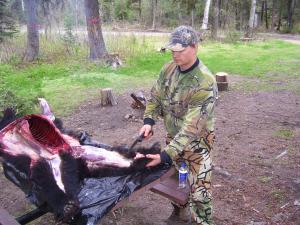
If you cannot skin out the claws, skin around the wrist and saw the wrist bone. Leave the pads attached to the hide.
Step 3. Finish skinning the entire hide to the back of the bear head.
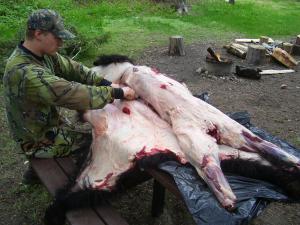
Step 4. Separate the ears from as close to the skull as possible.
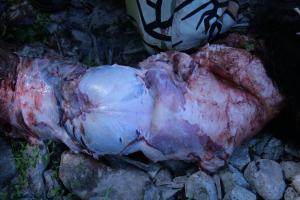
Step 5. Continue skinning to the eyes and while doing the eyes cut as much of the eyelids as possible.

Step 6. Then skin the cheeks and separate the lip tissue from the gums close to the jawbones leaving lots of lip tissue on the hide.

Step 7. Skin the nose out leaving as much cartilage as possible on the hide.
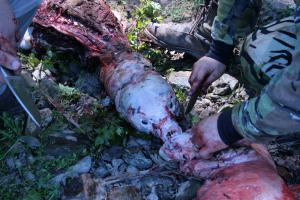
Remember to leave evidence of sex (penis sheath, vaginal orifice) attached to the hide, as some states require it.
This results in a squarer, more attractive rug. Most taxidermists would be happy to provide diagrams showing incision lines when skinning a black bear, grizzly bear, or polar bear for a rug.
Step 7. The next important step is to salt the hide. About 20 pounds of salt is required for a black bear and twice that much for a brown bear. Salt has a dehydrating effect, removing all the moisture and tightening all the hair follicles. Liberally apply salt inside the hide, inside the ears, nose, on the split lips, between the feet right up to the tail.
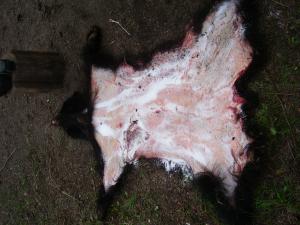
Pack the hide carefully in a burlap or game bag and hang it in a cool dry place out of the sun to drain and dry.
Get the hide as quickly from the field to the taxidermist
Remember, NEVER store or transport raw hides in plastic. This results in hair slip from the hide
A well-skinned hide will enable taxidermists to create much more lifelike and realistic mounts or rugs. Taxidermists are artists and not god to bring to life a hide that’s not been done carefully. This process is further discussed in greater detail on video in The Black Bear Hunting Encyclopedia.


